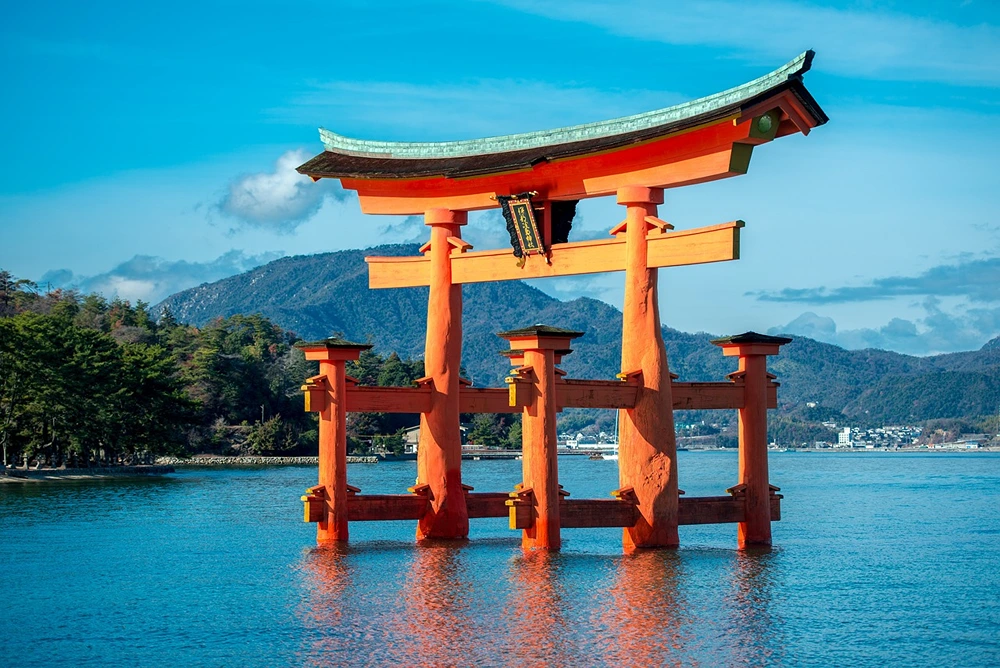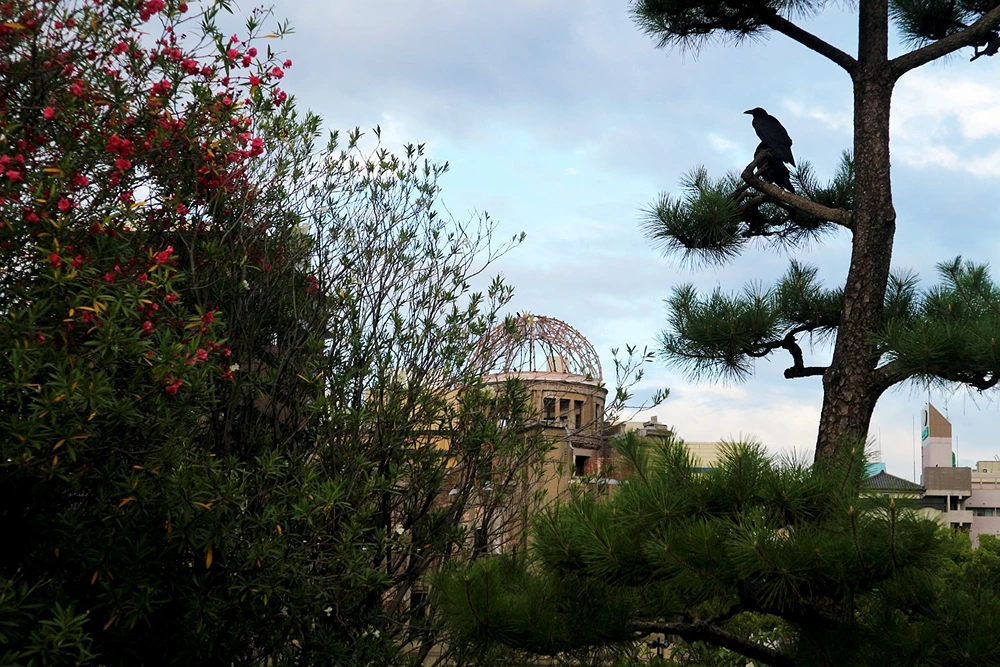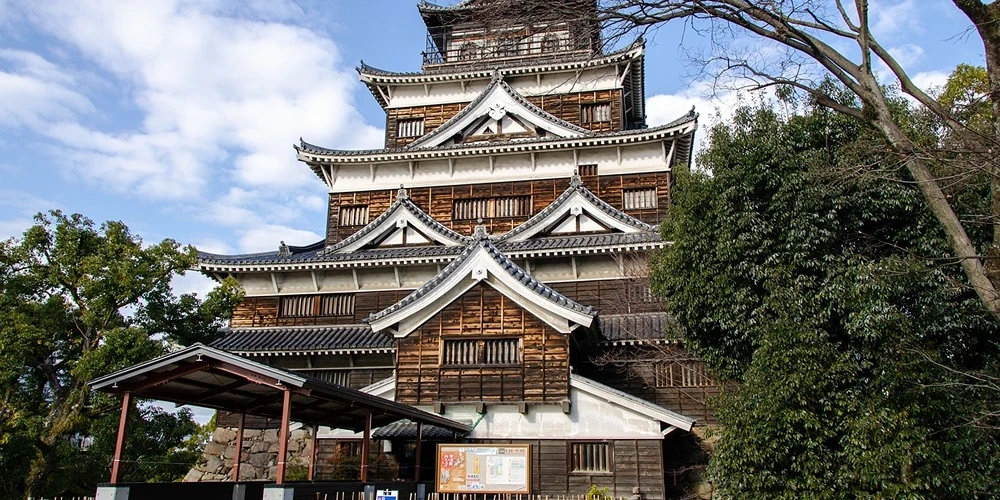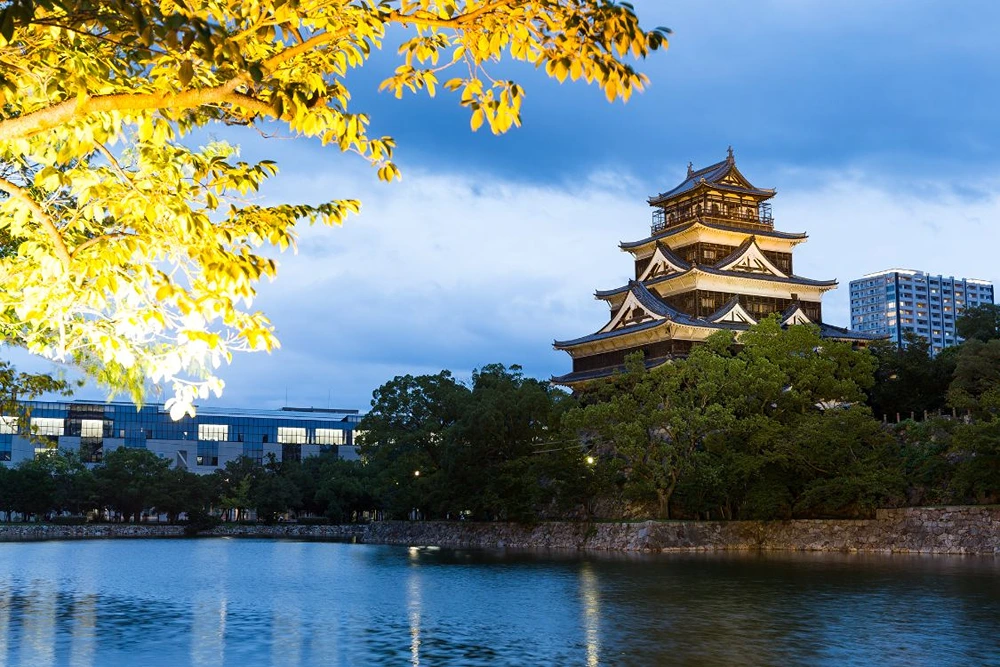Key highlights of Hiroshima:
- World-renowned Peace Memorial Park and Museum
- Rich cultural heritage and modern cityscape
- Beautiful natural surroundings, including nearby islands
- Unique local cuisine and warm hospitality
Travel Resources
- Flights: Use our flight search tool to find affordable options to Hiroshima Airport (HIJ).
- Travel Insurance: Protect your trip with comprehensive travel insurance tailored to your needs.
- Car Rental: While public transportation is excellent in Hiroshima, renting a car can be convenient for exploring the surrounding areas.
- Guided Tours: Enhance your experience with expert-led tours of Hiroshima’s historical sites and attractions.
- Japan Rail Pass: Consider purchasing a Japan Rail Pass for convenient and cost-effective travel within Hiroshima and across Japan.

Some History First
Hiroshima’s history is deeply intertwined with World War II and its aftermath:
- Founded in 1589 as a castle town
- August 6, 1945: First city in the world to suffer an atomic bombing
- Estimated 140,000 people died by the end of 1945 as a result of the bombing
- Rapid reconstruction began in the post-war years
- Dedicated to promoting peace globally since its recovery
Hiroshima Today
Modern Hiroshima is a testament to human resilience and the power of peace:
- Population of approximately 1.2 million
- Thriving industrial center, particularly in the automotive and machinery sectors
- Home to several universities and research institutions
- Known for its peace activism and international cooperation initiatives
- Blend of historical sites, modern architecture, and natural beauty
Is Hiroshima Safe?
Hiroshima is considered one of the safest cities in Japan for travelers. However, it’s always wise to take standard precautions:
- Be aware of your surroundings, especially in crowded tourist areas
- Keep valuables secure and be cautious of pickpocketing in busy locations
- Respect local customs and etiquette, particularly at peace memorials
- Follow official guidance during natural disasters, such as earthquakes or typhoons
Where is Hiroshima?
Hiroshima is strategically located in western Japan:
- Situated in the Chugoku region of Honshu, Japan’s main island
- Located along the Seto Inland Sea
- Approximately 800 kilometers (500 miles) west of Tokyo
- Well-connected to other major Japanese cities via high-speed rail and air travel
Latest Articles
From The Area
What is the Best Time to Visit Hiroshima?
The best time to visit Hiroshima depends on your preferences:
- Spring (March to May):
- Cherry blossom season (late March to early April)
- Mild temperatures and low rainfall
- Popular time for tourists
- Summer (June to August):
- Hot and humid with occasional rain
- Hiroshima Peace Memorial Ceremony on August 6th
- Various summer festivals and events
- Autumn (September to November):
- Pleasant temperatures and clear skies
- Beautiful fall foliage, especially on Miyajima Island
- Less crowded than spring, but still popular
- Winter (December to February):
- Cool but rarely snows
- Fewer tourists and potentially cheaper accommodations
- Illumination events and oyster season
How to Get to Hiroshima & Around
- By Air:
- Fly into Hiroshima Airport (HIJ), located about 50 km east of the city center
- Airport limousine buses connect the airport to downtown Hiroshima
- By Train:
- Shinkansen (bullet train) from major cities like Tokyo (4 hours) and Osaka (1.5 hours)
- Regular train services connect Hiroshima to nearby cities and attractions
- Within Hiroshima:
- Extensive tram network covers most of the city center
- Buses complement the tram system for broader coverage
- Hiroshima Sightseeing Loop Bus connects major tourist spots
- Taxis are readily available but can be expensive
- Rental bicycles are a popular option for short trips
Things to Do in Hiroshima
Explore Hiroshima’s top attractions and activities, including:
- Visit peace-related sites:
- Hiroshima Peace Memorial Park and Museum: Essential visit to understand the city’s history
- Atomic Bomb Dome: UNESCO World Heritage Site
- Children’s Peace Monument: Dedicated to child victims of the bombing
- Explore cultural attractions:
- Hiroshima Castle: Reconstructed samurai castle with a history museum
- Shukkeien Garden: Traditional Japanese landscape garden
- Hiroshima Museum of Art: Houses important Western and Japanese artworks
- Experience nature and scenery:
- Miyajima Island: Famous for its “floating” torii gate and Mt. Misen
- Sandankyo Gorge: Scenic ravine with waterfalls and hiking trails
- Seto Inland Sea National Park: Beautiful coastal scenery and islands
- Enjoy local activities:
- Watch a Hiroshima Carp baseball game at Mazda Zoom-Zoom Stadium
- Take a cruise on the Ota River delta
- Participate in a tea ceremony or traditional craft workshop
Where To Stay In Hiroshima
Hiroshima offers a range of accommodation options to suit all budgets and preferences:
- Luxury Hotels:
- Often located near the Peace Memorial Park or in the city center
- Offer high-end amenities and excellent service
- Business Hotels:
- Affordable and practical options
- Usually located near train stations and business districts
- Ryokans (Traditional Japanese Inns):
- Experience authentic Japanese hospitality
- Often found in quieter areas or on Miyajima Island
- Hostels and Guesthouses:
- Budget-friendly options
- Good for meeting other travelers
Popular areas to stay:
- Near Peace Memorial Park: Central location, close to major attractions
- Around Hiroshima Station: Convenient for transportation
- Hondori area: Shopping and entertainment district
- Miyajima Island: For a more tranquil, traditional experience

What To Eat In Hiroshima
Hiroshima is famous for its unique local cuisine:
- Must-try local specialties:
- Hiroshima-style Okonomiyaki: Layered savory pancake with noodles
- Oysters: Fresh or grilled, Hiroshima is famous for its oysters
- Tsukemen: Cold noodles with hot dipping sauce
- Momiji Manju: Maple leaf-shaped cakes filled with sweet bean paste
- Where to eat:
- Okonomimura: Building dedicated to Hiroshima-style okonomiyaki
- Hondori and Nagarekawa: Areas with numerous restaurants and izakayas
- Miyajima Island: Try local specialties like grilled oysters and momiji manju
- Dining experiences:
- Visit a sake brewery in Saijo, known as one of Japan’s three great sake-producing areas
- Try conveyor belt sushi restaurants for affordable sushi
- Experience fine dining at Michelin-starred restaurants
Entry & Exit Requirements
Before traveling to Hiroshima, ensure you meet Japan’s entry requirements:
- Valid passport with at least 6 months validity beyond your planned stay
- Visa: Many nationalities can enter Japan visa-free for short stays (usually 90 days)
- Return ticket or proof of onward travel
- Proof of sufficient funds for your stay
Note: Entry requirements can change. Always check the latest information from official sources before your trip.
What To Pack For Your Trip
Prepare for your Hiroshima adventure with these essentials:
- Comfortable walking shoes (you’ll do a lot of walking!)
- Appropriate clothing for the season (layers are best)
- Small towel (many public restrooms don’t provide them)
- Portable Wi-Fi device or SIM card for internet access
- Japan Rail Pass (if planning to travel beyond Hiroshima)
- Cash (while cards are increasingly accepted, Japan is still largely cash-based)
- Universal power adapter
- Pocket translator or translation app
- Reusable water bottle (tap water is safe to drink in Hiroshima)
- Umbrella or rain jacket (especially during the rainy season)
- Respectful attire for visiting peace memorials and temples
Remember to pack light, as storage space can be limited in Japanese accommodations and on public transportation.
FAQs
Credit cards are widely accepted in Hiroshima, especially in tourist areas and major establishments.
While not as common as in larger cities, English signage and basic English communication are available in tourist areas.
When visiting peace monuments, observe silence and show respect for the sites’ significance.



